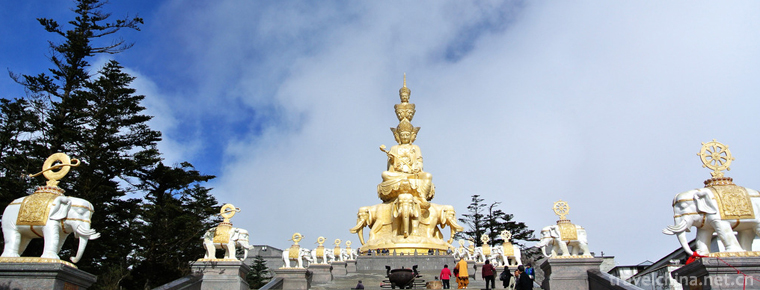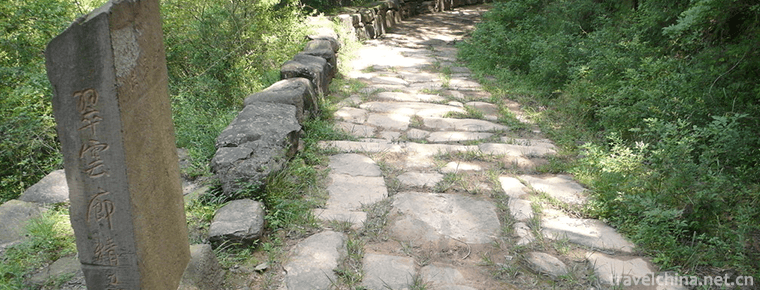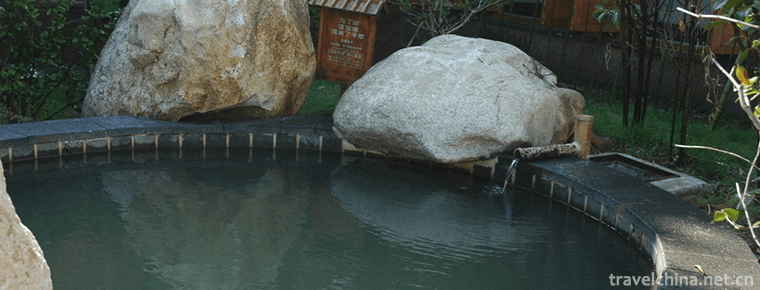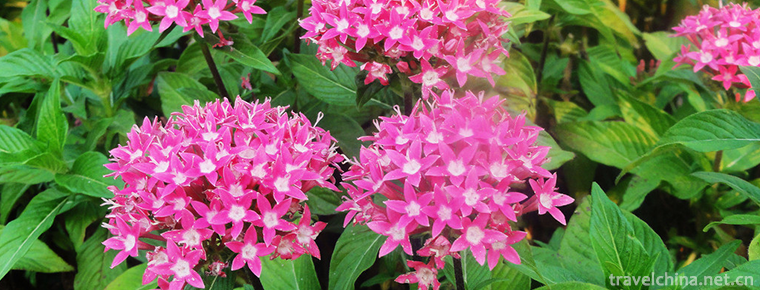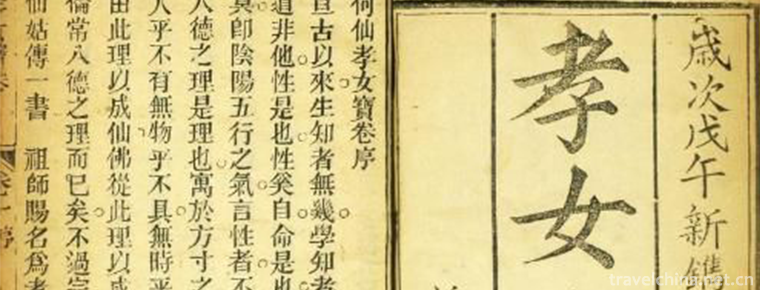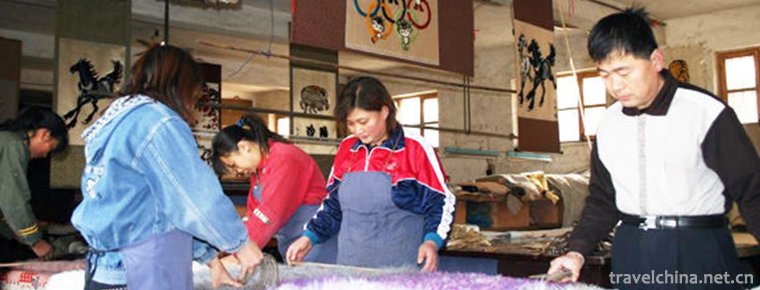Former residence of Wu Yuzhang
Former residence of Wu Yuzhang
Wu Yuzhang's former residence is located in group 6, caijiayan village, Shuangshi Town, Rong County, Zigong City, Sichuan Province. It is 14km away from the county seat and 32km away from Zigong City. You can go directly from Ziya road. In 1988, in order to commemorate the 110th anniversary of Wu's birth, the state allocated special funds to rebuild Wu Yuzhang's former residence and exhibition hall in the west of his former residence. On December 30 of the same year, it was launched. Since its official opening in January 1989, the exhibition hall of Wu Yuzhang's former residence has received hundreds of thousands of visitors from home and abroad, and has become the patriotic education base of Zigong City. In April 1991, Sichuan Provincial People's government announced that it was listed as a provincial cultural relics protection unit.
Basic introduction
At present, there are still three civil structure houses, two of which have buildings. In 1958, wuzhu Zhanghui County donated his old house to normal school. After the relocation of teachers' College in 1983, caijiayan middle school (now Yuzhang middle school) was set up. On the 110th anniversary of Wu's birth in 1988, the state allocated funds to rebuild Wu Yuzhang's former residence, renovate the road to Shuangshi Township and caijiayan bridge to the west of the former residence. After repair, the former residence of Wu Yuzhang covers an area of 15500 square meters, with a total construction area of 1050 square meters. On the lintel of the gate is a plaque inscribed by President Yang Shangkun, "former residence of Wu Yuzhang". Inside the door on both sides of the pillars engraved couplets: "flowers in the Bush, brother music; Book Field tax-free descendants of farming." A half length statue of Wu Yuzhang is placed in the middle of the courtyard. On the front of the statue base is engraved with an inscription by Deng Xiaoping, chairman of the Central Military Commission: "Wu Yuzhang, an outstanding proletarian revolutionist, educator, historian and linguist in China." The inscription of Wu Yuzhang's life is engraved on the back of the base in traditional Chinese. On the lintel of the main room hung a plaque inscribed by Marshal Xu Qianxiang, "revolutionary forebody.".
History of development
The exhibition hall of Wu Yuzhang's former residence was built in 1988. In 1991, it was approved as a provincial cultural relic protection unit in Sichuan Province. In 1994, it was approved as a youth education base by the Sichuan Provincial Committee of the Communist Party of China. In 1995, it was named the patriotism education base by the Sichuan provincial Party committee and the provincial government. In 2003, it was rated as a national AA scenic spot. In 2006, it was listed as a national key cultural relics protection unit.
Honor of scenic spot: AA grade scenic spot provincial cultural relics protection unit youth education base patriotism education base
Excellent collection
There are 11 exhibition rooms with more than 1000 cultural relics of high historical research value. Cultural relics record Wu Lao's life. Among them, "Rongxian independence" under the leadership of long Mingjian and Wang Tianjie in 1911 established the Rongxian military government, which pioneered the revolution of 1911, and broke away from the rule of the Qing government half a month earlier than the Wuchang Uprising.
The picture on the right shows Mr. Wu's clothes and walking stick.
Equipment and facilities
At present, there are still three civil structure houses, two of which have buildings, covering an area of 96 square meters. There are couplets on both sides of the gate and on the eaves pillars: "it's hard to start a business, but it's also difficult to keep a business. It's important to know that material resources are difficult, so don't strive for vanity and decency in everything. It's easy to live at home, but it's not easy to run a family,
We should establish a good scale of furnishings in the former residence. "A hundred years of Pizhen Yanling Xu; three concessions still retain Taibo's heart.". The hall displays congratulatory words and birthday poems of Chairman Mao Zedong, Dong Biwu, Xie jueyai and other comrades during Wu Yuzhang's 60th and 70th birthday. On the right side of the main room are Wu Yuzhang's relics and pictures of his revolutionary family; on the left side of the main room are pictures of people's nostalgia for Wu Yuzhang.
In the scenic area, there are "Tomb of old Wu", old Wu's "crying for my wife's visit to binglian", "the most difficult Pavilion", "echo land", "Buqian spring", "former residence Lake", "osmanthus tea garden", "shurenyuan Hotel", large, medium and small conference rooms. There are hundreds of valuable flowers and trees, such as ginkgo, osmanthus, huangjuelan, banyan, etc. Tourist center, shopping center, medical emergency center, smoking room and other supporting tourism facilities have been established. The green area reaches 80%.
Personal story
Wu Yuzhang (1878-1966) was born in caijiayan, Shuangshi Township, Rong County, Zigong City, Sichuan Province. He was born on December 30, 1878. He was a great proletarian revolutionist, educator, historian and linguist in modern Chinese history. In 1903, he studied in Japan and joined the league. He presided over Sichuan magazine. In 1911, he was ordered to go back to Sichuan to launch an uprising. Together with his fellow countrymen, long Mingjian and Wang Tianjie, he declared Rongxian independent on September 25 and set up the Rongxian military government. After that, he set up the Neijiang military government and went to Chongqing. After the revolution of 1911, he was wanted and forced to exile in France for opposing Yuan Shikai's claim to be emperor. He and Cai Yuanpei organized the society of hard work and thrift in France. In early 1924, he returned to Sichuan and secretly established the Communist Youth League of China with Yang Angong in Chengdu. The following year, he joined the Communist Party of China and remained in the Kuomintang, becoming one of the nine core figures of the Kuomintang Central Committee. In 1927, he participated in Nanchang Uprising and served as member and Secretary General of the Revolutionary Committee. From 1928 to 1937, he worked in the Soviet Union, France and Western Europe and participated in the Seventh Congress of the Communist International. After returning to China in 1938, he successively served as the director of the culture and Education Committee of the Shaanxi Gansu Ningxia border region, President of Lu Xun art college, and President of North China University. As early as the 1940s, he was known as the famous "five elders of Yan'an" of our party, together with Dong Biwu, Lin Boqu, Xu Teli and Xie Jueya. In December 1945, he went to Chongqing with Zhou Enlai to attend the Political Consultative Conference. After the founding of the people's Republic of China, he was the president of Renmin University of China and the director of the Chinese character Reform Commission. He made great contributions to the education of new China. He died of illness on December 12, 1966.
Birthday message
Mao Zedong (January 15, 1940)
Today, we gather here to celebrate the birthday of Wu. Thinking of how I felt when I celebrated Mr. Xu's birthday, I said at that time that we celebrated his birthday for no reason. I remember when I was a child, I was very unhappy with the old people, because they would bully the young people. Who was wrong with the young people? But you can't be wrong. They're cruel to you. Children and young people have no say in everything. The young people in China suffered too much from the feudal family and society. But the world has changed. Young people like the old people, such as Wu, Lin, Xu, Dong and Xie, are very popular with young people. Why is there such a change? Because these old comrades not only do not bully young people, but also very enthusiastic to help them, their behavior is enough for the youth model, so the youth love them very much. There are also many old people respected by young people outside the party, such as Ma Xiangbo. When he was on his birthday, our Communist Party sent a congratulatory message because he advocated Anti Japanese and democratic politics. People always want to be old. Why are old people valuable? If old is precious, there are too many valuable people. So we must have a standard. That is to say, the valuable thing is that he always does good things all his life, does not do bad things, does good to human beings, and does not do harm to people. If you do something good at the beginning and then do something bad, it is called no persistence. It is not difficult for a person to do something good. What is difficult is to do good things all his life and not to do bad things, to benefit the masses, to the youth, to the revolution, and to struggle hard for decades. This is the most difficult and difficult thing!
Our veteran Comrade Wu Yuzhang is such a man who has been living for decades. He is sixty years old. He has been engaged in the revolution for 40 years from the United League to today. He has been wandering in the middle of the country. He has been hard prepared and has never changed. This is not easy. There are not many people left from the alliance to this day, and few of them have been fighting for the revolution, no matter what. To do so, we need not only a firm and correct political direction, but also a spirit of hard struggle. Otherwise, we can not resist all kinds of evil forces and waves, such as the threat of death, the threat of starvation, the threat of failure of the revolution, and so on. It is through such countless storms that our Comrade Wu Yuzhang came. Therefore, we should learn from his advantages in all aspects, but especially his persistence in revolution. This is the most precious thing. It is the glory of our party and the glory of the Chinese revolution. We all celebrate his 60th birthday with great joy. I think the main significance is here.
Tour guide
Admission: yuan / person.
Discount: free tickets for the elderly, servicemen and the disabled (with valid certificates), and free tickets for children under 1.2m.
geographical position
Wu Yuzhang's former residence is located in group 6, caijiayan village, Shuangshi Town, about 15 km away from the county seat, Southeast of Rong County, Zigong City, Sichuan Province.
Address: Group 6, caijiayan village, Shuangshi Town, Southeast, Rong County, Zigong City, Sichuan Province
By bus: 14 kilometers away from the county seat, 32 kilometers from Zigong City, you can go directly from Ziya road.

Former residence of Wu Yuzhang
-
Mount Emei
Mount Emei is located in Mount Emei, Leshan City, Sichuan Province, China.
Views: 404 Time 2018-10-13 -
The Wudalianchi Scenic Area
Wudalianchi Scenic Spot: National AAAAA Scenic Spot, World Geological Park, World Human and Biosphere Reserve, International Green List
Views: 207 Time 2018-12-05 -
Ertan National Forest Park
Ertan National Forest Park is located in Yanbian County and Miyi County, the northern suburb of Panzhihua City, Sichuan Province, with a total area of 732.4 square kilometers
Views: 157 Time 2018-12-22 -
Qiankun Bay Scenic Area
Qian Kun Wan Scenic Area is located in Qian Kun Wan Town, Yanchuan County, Yan'an City, Shaanxi Province. It faces the Yellow River to the East and Yonghe County, Shanxi Province
Views: 218 Time 2018-12-22 -
Cuiyun Lang Scenic Area
Cuiyun Corridor, also known as "Huangbai Avenue", is a green corridor composed of nearly 10,000 green roads and ancient cypresses. It is the oldest and most well-preserved ancient road traff
Views: 129 Time 2019-01-06 -
Daqing Oilfield History Exhibition Hall
Daqing Oilfield History Exhibition Hall is the first original Memorial Hall in China with the theme of petroleum industry, and it is a cultural relic protection unit in Heilongjiang Province.
Views: 163 Time 2019-01-07 -
Guan Tang hot spring
Guantang Hot Spring is located in Tangtou Town, Linyi City, Shandong Province, on the East Bank of Yihe River. The hot spring covers an area of nearly 260 Mu and has a construction area of 100,000 squ
Views: 210 Time 2019-01-13 -
Xishuangbanna Tropical Flower Garden
Xishuangbanna Tropical Flower Garden is located in Yunnan Institute of Tropical Crop Sciences, Jinghong City, Xishuangbanna Prefecture, Yunnan Province. It covers an area of 80 hectares and is one of
Views: 159 Time 2019-02-25 -
Treasure roll
Baojuan is a traditional Chinese literary form of rap and singing, which evolved from the folklore in the temples of Tang Dynasty. Most of the authors are monks and nuns.
Views: 532 Time 2019-04-04 -
Tanning Technology of Tan Sheepskin
Tanning process of Tan sheepskin in Jiaocheng County is relatively complex, totally depending on manual operation. There are more than 20 processes such as washing, soaking, drying, shoveling, nailing
Views: 274 Time 2019-06-18 -
Suining economic development
In 2019, Suining's GDP will reach 134.573 billion yuan, an increase of 8.1% over the previous year (the same below) at comparable prices. Among them, the added value of the primary industry was 18.521 billion yuan, an increase of 2.7%; the added value of the
Views: 368 Time 2020-12-16 -
Guangan primary industry
In 2019, the sown area of grain in Guang'an City is 287000 hectares, and the total grain output is 1.8 million tons, an increase of 1000 tons or 0.04%. Among them, the rice output was 1.047 million tons, down 0.4%; the corn output was 448000 tons, an incre
Views: 180 Time 2020-12-19
